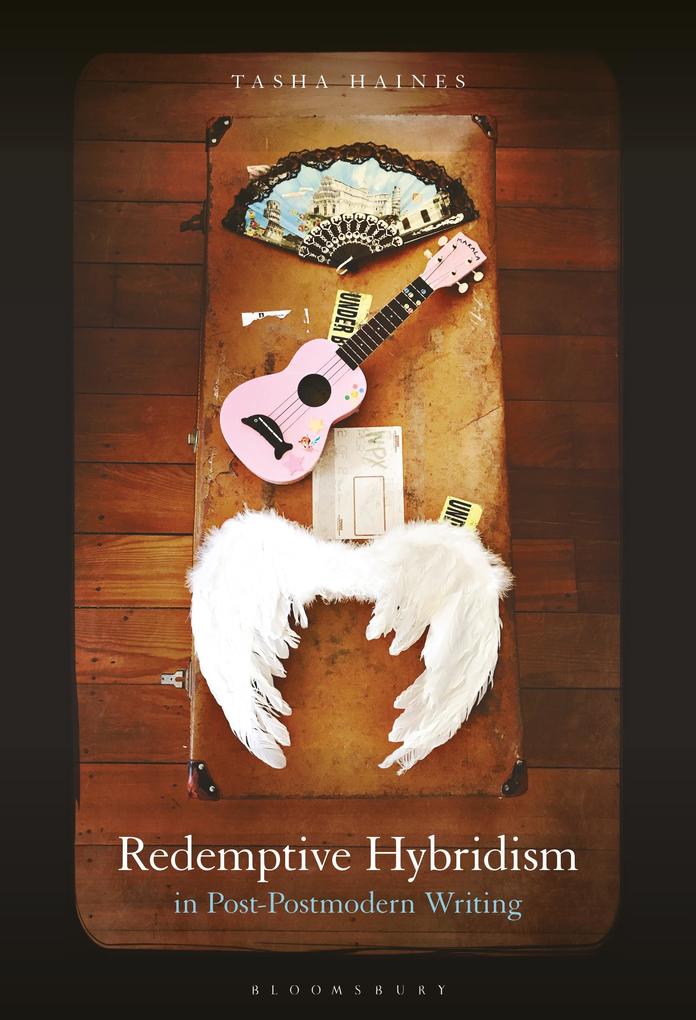
Zustellung: Mi, 09.07. - Sa, 12.07.
Noch nicht erschienen
VersandkostenfreiBestellen & in Filiale abholen:
"From Virginia Woolf to David Foster Wallace and beyond, 'redemptive hybridism' - a new way of reading texts full of possibility and genre blending - emerges as a key trajectory for post-postmodernity"--
Inhaltsverzeichnis
Preface
Introduction: The Enemy Within
Taking Enemies In
This Multivariant Plot
The Vitality of Difference
A Lineage of Wariness and Influence
The Terrible Postmodern Party
Part I: Features of Redemptive Hybridism
1. The Redemptive Textual Body
Etymologies
Umbilical Connection, Author to Text
The Word Made Flesh
2. The Hybrid Middle
Pushing out towards Ends
Sarraute as Middle
Parataxis and the Middle
Time and Unfinishedness
3. Family Traits of Fragmentation
The Fragmented Mind
Constraint, Minimalism, and the Caveat
Vestibule and Fringe
Ethics, Alterity, and the Reader
The Ethical, The Moral, and the Difference
High, Low, High Low, It's Off to Blend We Go
Part II: Figures of Redemptive Hybridism
4. Woolf's Atom; The Image of Hybridity
Begin with the Atom, Virginia Woolf
Saturation in Woolf and Wallace
Mrs. Dalloway as Fertile Ground
Inter-genre Woolf
It Ends Where It Begins, with the Atom
5. Finding a Name for Possibility
Postmodernism, Feminism, and Agency
Finding Names and Building Frames
Call Me[a]taxy: Some Recent Pre-fixes
6. The Pale King's Constellation; Factoids, Ghosts, and Boredom
Tell the Truth, David Foster Wallace
Everyday Ghosts, Souls, & Phantoms
Ambiguity & Contradiction in The Pale King
Boredom: Between Crisis & Epiphany
A Conclusion, of Sorts; This Is Not the End
References
Index
Introduction: The Enemy Within
Taking Enemies In
This Multivariant Plot
The Vitality of Difference
A Lineage of Wariness and Influence
The Terrible Postmodern Party
Part I: Features of Redemptive Hybridism
1. The Redemptive Textual Body
Etymologies
Umbilical Connection, Author to Text
The Word Made Flesh
2. The Hybrid Middle
Pushing out towards Ends
Sarraute as Middle
Parataxis and the Middle
Time and Unfinishedness
3. Family Traits of Fragmentation
The Fragmented Mind
Constraint, Minimalism, and the Caveat
Vestibule and Fringe
Ethics, Alterity, and the Reader
The Ethical, The Moral, and the Difference
High, Low, High Low, It's Off to Blend We Go
Part II: Figures of Redemptive Hybridism
4. Woolf's Atom; The Image of Hybridity
Begin with the Atom, Virginia Woolf
Saturation in Woolf and Wallace
Mrs. Dalloway as Fertile Ground
Inter-genre Woolf
It Ends Where It Begins, with the Atom
5. Finding a Name for Possibility
Postmodernism, Feminism, and Agency
Finding Names and Building Frames
Call Me[a]taxy: Some Recent Pre-fixes
6. The Pale King's Constellation; Factoids, Ghosts, and Boredom
Tell the Truth, David Foster Wallace
Everyday Ghosts, Souls, & Phantoms
Ambiguity & Contradiction in The Pale King
Boredom: Between Crisis & Epiphany
A Conclusion, of Sorts; This Is Not the End
References
Index
Produktdetails
Erscheinungsdatum
26. Juni 2025
Sprache
englisch
Seitenanzahl
168
Autor/Autorin
Tasha Haines
Verlag/Hersteller
Produktart
kartoniert
Gewicht
454 g
Größe (L/B/H)
229/152/25 mm
ISBN
9781501394546
Bewertungen
0 Bewertungen
Es wurden noch keine Bewertungen abgegeben. Schreiben Sie die erste Bewertung zu "Redemptive Hybridism in Post-Postmodern Writing" und helfen Sie damit anderen bei der Kaufentscheidung.









